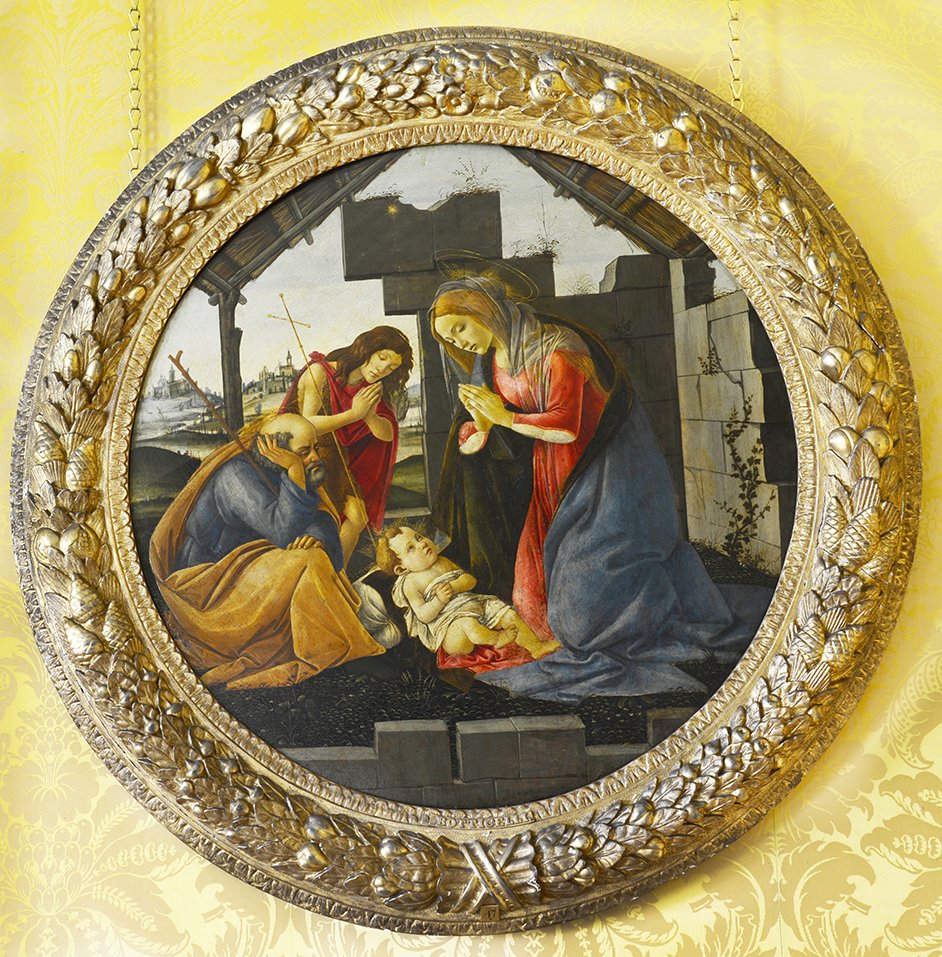
The Holy Family with St. John the Baptist
c. 1480s
Oil on panel, circular - 35 1/2 ins diameter
Collection Details
Seen by Waagen, 1854, in Lord Ward’s collection (ie, 11th Lord Ward, 1817–85, created Earl of Dudley, 1860). It may have come from the collection of Count Bisenzo, Rome, which Lord Ward bought en bloc in 1847. It is not identifiable in the 1841 catalogue of Cardinal Fesch, a number of whose pictures he had also acquired); 2nd Earl of Dudley sale, Christie’s, 25 June 1892, lot 50: bt by Deprez; Wickham Flower by 1893; his sale, Christie’s, 17 December 1904, lot 43; bt by Agnew, from whom acquired by Alexander Henderson, later 1st Lord Faringdon.
Literature
Waagen, Treasures of Art, 1854, ii, p.231; Berenson, Italian Pictures, 1932, p. 102; idem, Florentine Pictures, 1963, i, p.33 (as studio); G Mandel, L’opera completa del Botticelli, 1967, No.113* (falsely, as a replica of National Gallery No.2497); R Lightbown, Botticelli, 1978, No.C42 (as workshop).
Exhibition Details
RA, Winter, 1871, No.299; New Galleries, London, Early Italian Art, 1893, No.108; Wildenstein, Painting in Florence and Siena, 1965, No.61.
Related Drawing
A pen and ink drawing for St. Joseph was sold by Sotheby’s in the Le Hunte (26 June 1957) and Benjamin Sonnenberg (5–9 June 1979) sales, as ‘School or Circle of Botticelli’; it was, however, most recently resold by them (New York, 13 January 1988) as a later work by Botticelli himself, but (mistakenly) for one of the figures in the Agony in the Garden in Granada. If the drawing is indeed autograph, Botticelli must be considered as having had at least some hand in the creation of the painting.
Background
The attribution to the studio of Botticelli was Berenson’s. Waagen had described it as ‘an inferior work of the master’s later time’. Fritz Heinemann (letter of 6 July 1976) suggested a quite unsustainable attribution to Filippino Lippi. Other commentators, implicitly or explicitly, concur with Berenson although more recently, it is thought to be a substantially autograph work of the late 1480s.
The Trustees of the Faringdon Collection 25.
All rights reserved.
